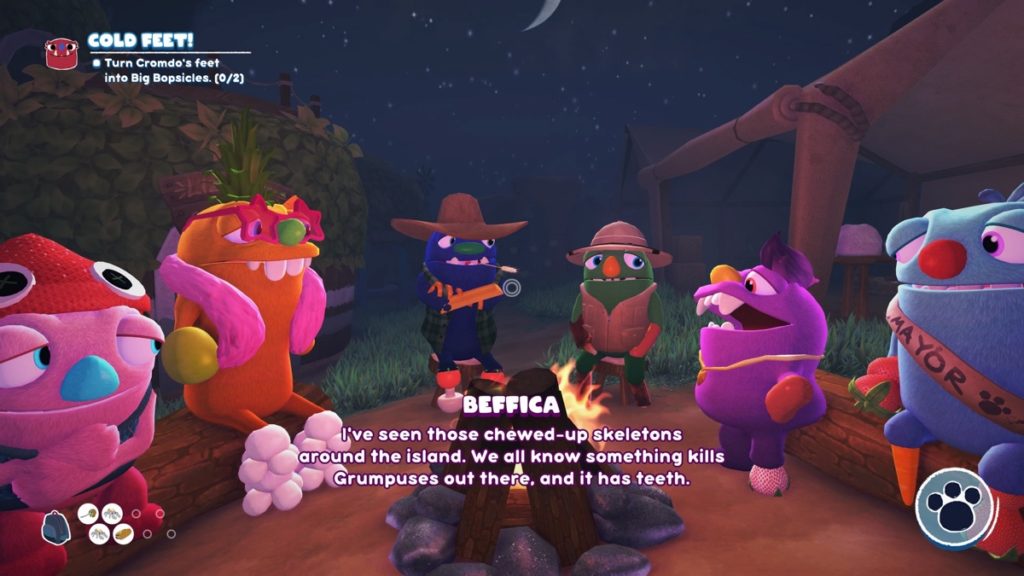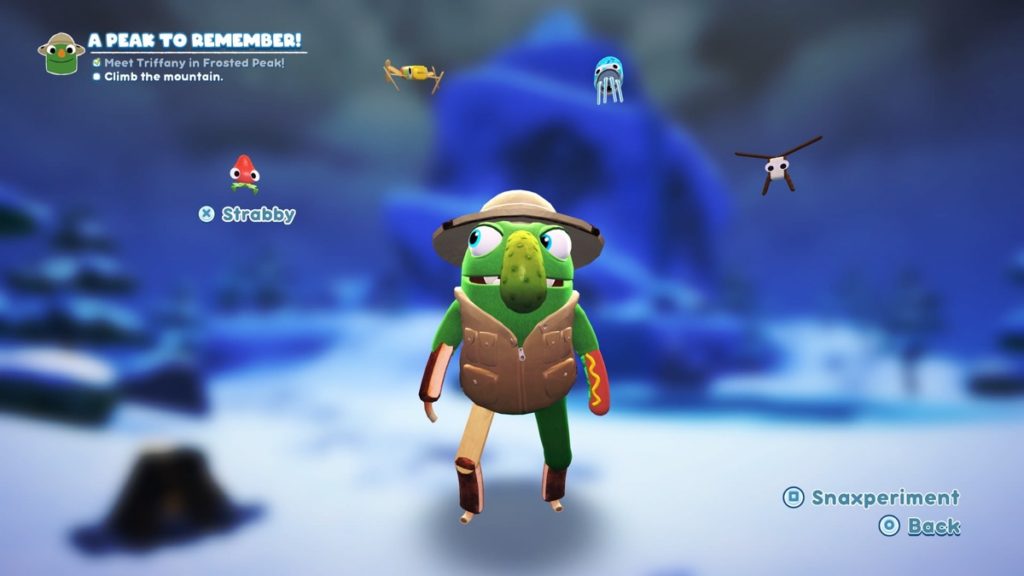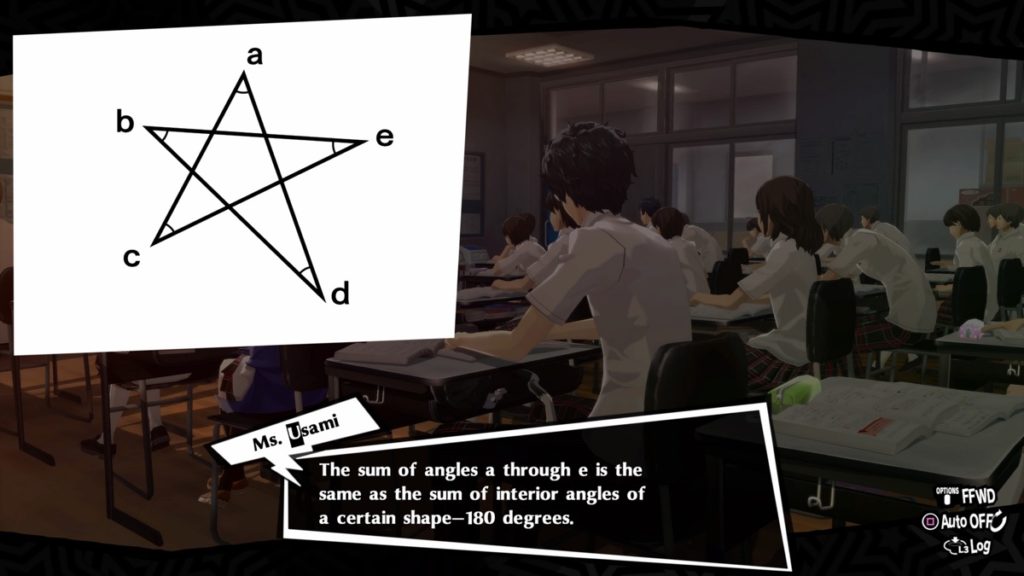买了PS5之后一直在玩PS4游戏觉得有点说不过去,但PS5上的游戏现在还比较乏善可陈。于是就试了一下PS+送的Bugsnax。没料想玩上之后感觉还不错。。很快通关了。
这游戏初看上去画风鲜亮,做工粗放,像个幼儿游戏。大概的玩法就是放陷阱捉各种虫子,有点像弄个盆儿撒把米粒来扣麻雀,总是还有点原始的兴奋感的,于是还能玩下去。然而很快我就意识到一些不对劲,这游戏低幼的外皮之下有个很鬼畜的内核。。

首先,这些飞的爬的“虫子”其实是bug + snack的合体(hence the name, bugsnax),每个虫子细看之下都是一个零食的样子。满地爬的小爬虫身体其实可能是个草莓也可能是块奥利奥,冲来冲去的大爬虫身体每一节都是个三明治,天上飞的可能是一个烤棉花糖,也有可能是片pizza。。每种虫子还有自己的独特念白,基本上都是用魔性的音调念叨自己的名字。对我来说玩这游戏的主要乐趣就是看这些滑稽的虫子设计,和弄明白怎么用游戏给的几种工具来抓每种虫子。
其次,游戏的设定是岛上的村民大多很喜欢吃这些bugsnax,他们给你的任务也大多是去抓某种虫给他们吃。关键是,每次喂一个村民吃bugsnax,他们的身体一个部分就会变形成那个bugsnax的样子。。你还可以指定哪个部位变。比如下图这位大概就是吃了热狗,巧克力冰棒和酸黄瓜。这个游戏的副标题叫You Are What You Eat… 可以说是相当切题了。

最后谈一些杂项。这游戏的村民对话都是配了音的,配得还不错。剧情并不太低幼,有很多滑稽好笑的段子。吃bugsnax变形的设定使得整个剧情都有些dark。。整个游戏并不太长,十来小时就可以通关。虽说是个利用各种工具的解谜游戏,偶尔会发现“这东西还能这么用”的时候有点塞尔达的那个味儿,但远没有那么精致。据说PS5版相对PS4版的最大改进就是切换区域的时候读盘快了很多,至于PS5手柄的音效和震动是用了一点,但并没有感觉多出彩。游戏地图有七八个区域,但是没有fast travel换区全靠自己跑路。背包容量也做得很小只能存几个虫子,于是让人不是很有收集的欲望,通关也就看了八九不离十了。


